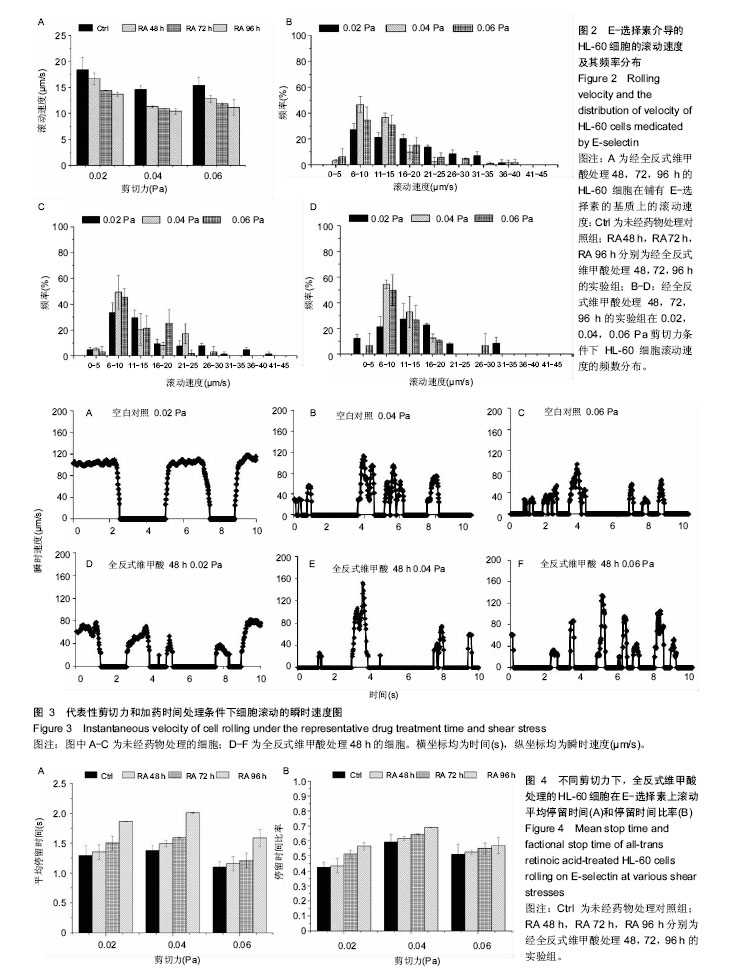| [1] Chen L, Cui YB, Si YL, et al. Lentivirus?mediated RIG?I knockdown relieves cell proliferation inhibition, cell cycle arrest and apoptosis in ATRA?induced NB4 cells via the AKT?FOXO3A signaling pathway in vitro. Mol Med Rep. 2017;16(3): 2556-2562.[2] Ma RJ, Zhu ZM, Yuan XL, et al. Efficacy of combination of ATRA, ATO and anthracyclines induction therapy in patients with acute promyelocytic leukemia. Zhonghua Xue Ye Xue Za Zhi. 2017;38(6):523-527.[3] Emi N. Current treatment strategies for newly diagnosed and relapsed APL. Rinsho Ketsueki. 2017;58(10):1872-1877.[4] Humbert M, Federzoni EA, Tschan MP. Distinct TP73-DAPK2-ATG5 pathway involvement in ATO-mediated cell death versus ATRA-mediated autophagy responses in APL. J Leukoc Biol. 2017;102(6):1357-1370.[5] Herter J, Zarbock A. Integrin Regulation during Leukocyte Recruitment. J Immunol. 2013;190(9):4451-4457.[6] Zarbock A, Kempf T, Wollert KC, et al. Leukocyte integrin activation and deactivation: novel mechanisms of balancing inflammation. J Mol Med (Berl). 2012;90(4):353-359.[7] Hanna S, Etzioni A. Leukocyte adhesion deficiencies. Ann N Y Acad Sci. 2012;1250:50-55.[8] Begandt D, Thome S, Sperandio M, et al. How neutrophils resist shear stress at blood vessel walls: molecular mechanisms, subcellular structures, and cell-cell interactions. J Leukoc Biol. 2017;102(3):699-709.[9] Angiari S. Selectin-mediated leukocyte trafficking during the development of autoimmune disease. Autoimmun Rev. 2015;14(11):984-995.[10] McEver RP. Selectins: initiators of leucocyte adhesion and signalling at the vascular wall. Cardiovasc Res. 2015;107(3): 331-339.[11] McEver RP, Zhu C. Rolling cell adhesion. Annu Rev Cell Dev Biol. 2010;26:363-396.[12] Zarbock A, Ley K, McEver RP, et al. Leukocyte ligands for endothelial selectins: specialized glycoconjugates that mediate rolling and signaling under flow. Blood. 2011; 118(26):6743-6751.[13] Hofmann A, Gerrits B, Schmidt A, et al. Proteomic cell surface phenotyping of differentiating acute myeloid leukemia cells. Blood. 2010;116(13):e26-34.[14] Davis C, Fischer J, Ley K, et al. The role of inflammation in vascular injury and repair. J Thromb Haemost. 2003;1(8): 1699-1709.[15] Ley K. The role of selectins in inflammation and disease. Trends Mol Med. 2003;9(6):263-268.[16] Braess J. Acute myeloid Leukemia. Dtsch Med Wochenschr. 2016;141(24):1748-1751.[17] Lo-Coco F, Cicconi L, Breccia M. Current standard treatment of adult acute promyelocytic leukaemia. Br J Haematol. 2016; 172(6):841-854.[18] Nitto T, Sawaki K. Molecular mechanisms of the antileukemia activities of retinoid and arsenic. J Pharmacol Sci. 2014; 126(3):179-185.[19] Jeanne M, Lallemand-Breitenbach V, Ferhi O, et al. PML/RARA oxidation and arsenic binding initiate the antileukemia response of As2O3. Cancer Cell. 2010;18(1): 88-98.[20] Yago T, Wu J, Wey CD, et al. Catch bonds govern adhesion through L-selectin at threshold shear. J Cell Biol. 2004; 166(6):913-923.[21] Lawrence MB, Kansas GS, Kunkel EJ, et al. Threshold levels of fluid shear promote leukocyte adhesion through selectins (CD62L,P,E). J Cell Biol. 1997;136(3):717-727.[22] Finger EB, Puri KD, Alon R, et al. Adhesion through L-selectin requires a threshold hydrodynamic shear. Nature. 1996;379 (6562):266-269.[23] Yakovenko O, Sharma S, Forero M, et al. FimH forms catch bonds that are enhanced by mechanical force due to allosteric regulation. J Biol Chem. 2008;283(17): 11596-11605.[24] Evans E, Leung A, Hammer D, et al. Chemically distinct transition states govern rapid dissociation of single L-selectin bonds under force. Proc Natl Acad Sci U S A. 2001;98(7): 3784-3789.[25] Marshall BT, Long M, Piper JW, et al. Direct observation of catch bonds involving cell-adhesion molecules. Nature. 2003;423(6936):190-193.[26] Yago T, Zarnitsyna VI, Klopocki AG, et al. Transport governs flow-enhanced cell tethering through L-selectin at threshold shear. Biophys J. 2007;92(1):330-342.[27] Li Q, Wayman A, Lin J, et al. Flow-Enhanced Stability of Rolling Adhesion through E-Selectin. Biophys J. 2016;111(4): 686-699.[28] Li Q, Fang Y, Ding X, et al. Force-dependent bond dissociation govern rolling of HL-60 cells through E-selectin. Exp Cell Res. 2012;318(14):1649-1658.[29] Yago T, Wu J, Wey CD, et al. Catch bonds govern adhesion through L-selectin at threshold shear. J Cell Biol. 2004;166(6): 913-923.[30] Flynn PJ, Miller WJ, Weisdorf DJ, et al. Retinoic acid treatment of acute promyelocytic leukemia: in vitro and in vivo observations. Blood. 1983;62(6):1211-1217.[31] Huang AC, Hu L, Kauffman SA, et al. Using cell fate attractors to uncover transcriptional regulation of HL60 neutrophil differentiation. BMC Syst Biol. 2009;3:20.[32] Martin SJ, Bradley JG, Cotter TG. HL-60 cells induced to differentiate towards neutrophils subsequently die via apoptosis. Clin Exp Immunol. 1990;79(3):448-453.[33] Nowak D, Stewart D, Koeffler HP. Differentiation therapy of leukemia: 3 decades of development. Blood. 2009;113(16): 3655-3665.[34] Brown DC, Tsuji H, Larson RS. All-trans retinoic acid regulates adhesion mechanism and transmigration of the acute promyelocytic leukaemia cell line NB-4 under physiologic flow. Br J Haematol. 1999;107(1):86-98.[35] Lou J, Yago T, Klopocki AG, et al. Flow-enhanced adhesion regulated by a selectin interdomain hinge. J Cell Biol. 2006; 174(7):1107-1117.[36] Gee DJ, Wright LK, Zimmermann J, et al. Dimethylsulfoxide exposure modulates HL-60 cell rolling interactions. Biosci Rep. 2012;32(4):375-382.[37] Lei X, Lawrence MB, Dong C. Influence of cell deformation on leukocyte rolling adhesion in shear flow. J Biomech Eng. 1999; 121(6):636-643.[38] 彭时平. 全反式维甲酸处理下HL-60细胞增殖、分化及滚动黏附的研究[D].广州:华南理工大学, 2014:78. |
.jpg)


.jpg)